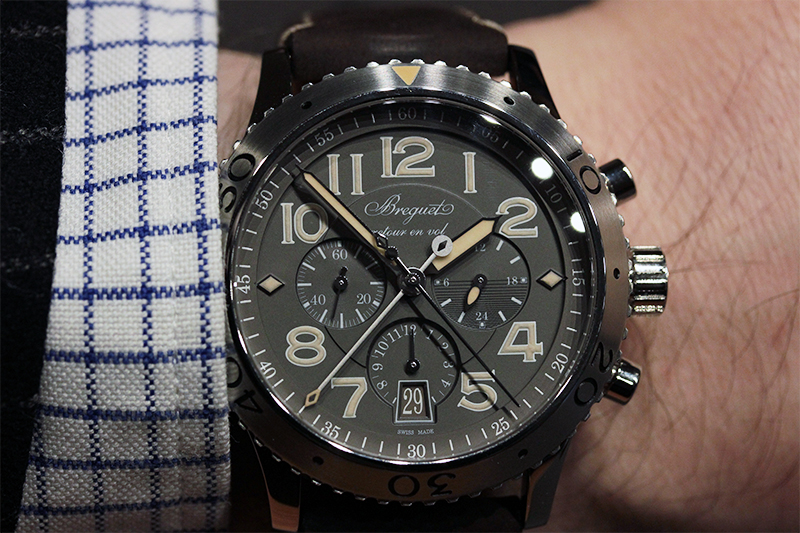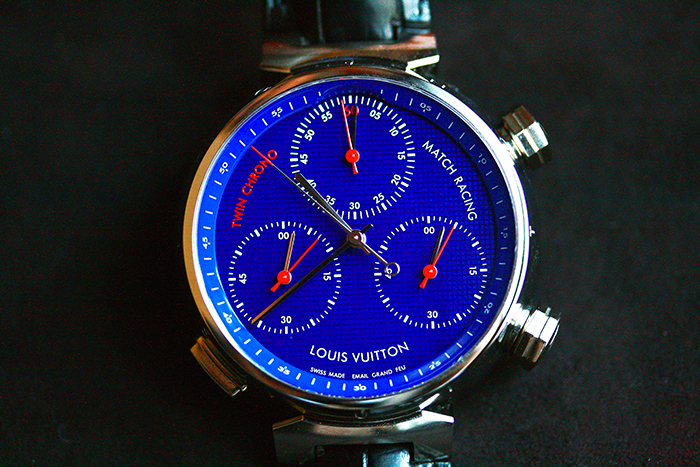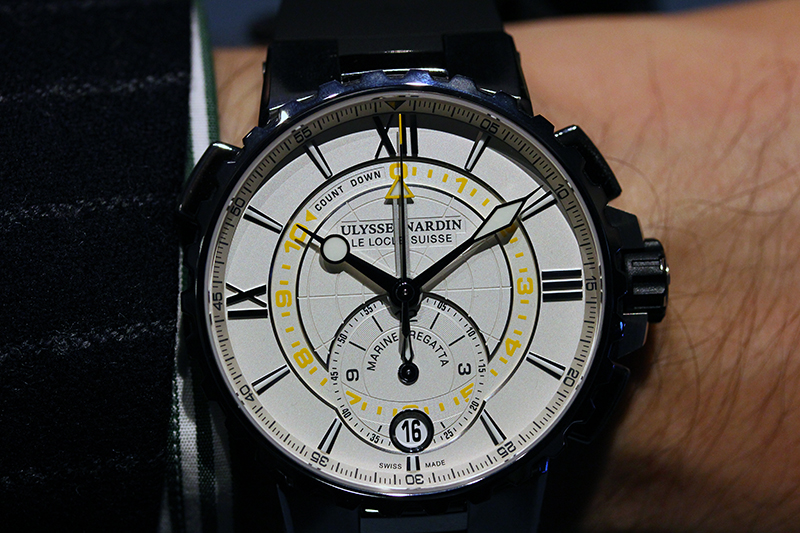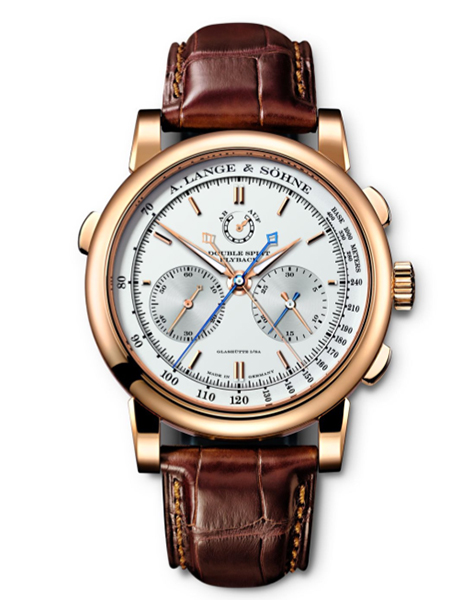Legality Of Buying Chronograph watches – Categorising chronographs Replica At Lowest Price
The chronograph. It’s a linguistic convention to talk about this feature in the singular, but in fact the chronograph is plural in nature. There are around twenty different types, which all have specific displays, controls, functions and abilities. As we often find in the watchmaking world, a complication is in fact a little world of its own, with its own codes and conventions.
A chronograph is defined as a watch that is capable of measuring one or more finite time intervals, and then being reset to zero. The classic version is simply called a chronograph. It has three distinct operations – stop, start and zero reset – which are triggered by two pushers. The first pusher starts and stops the timing operation, and can start and stop repeatedly. Once finished, the counter is reset to zero with the second pusher, and the sequence can begin again. While timing is ongoing, the zero reset button doesn’t work. There monopusher variant can implement just one possible sequence: start – stop – zero. And it can’t be stopped and restarted.
One of the most popular variations of the chronograph is the flyback. Thanks to a slightly different mechanical construction, it is not necessary to stop the timer before zeroing it and launching a different timing operation. Times can therefore be measured back to back, simply by pressing the second pusher. This complication can be combined with the classic two-pusher chronograph as well as with a split-seconds function.
Let us stick with the dial side and begin with its most immediately apparent effort: its proudly displayed tourbillon bridge and assembly. The bridge itself features a curve on each end that’s observable from the slightest of viewing angles. Have a closer look and you’ll see what seems to be one of the most challenging anglages ever: at the shape of a “V” the edges are bevelled and polished by hand. The two prongs lead to a gold chaton with a diamond endstone interior — a long-forgotten element reserved for just the finest pocket watches of old.The tourbillon’s cage itself features unusually romantic curves and eye-wateringly mirror polished shirt surfaces. The next image above reveals how that mirror finish works: it’s either silky-shiny whitened, or pitch black. Since the tourbillon sits so deep beneath the dial, light finds funny ways to make it to just some bits and pieces of this tourbillon assembly — another, but brilliant light display on display.Lange state the tourbillon “overcomes the pull of gravity” and I’m sorry, but I can’t help but cringe every time I hear or read that. Jedi and astronauts onboard the ISS may defeat the pull of gravity, but not many others — and a tourbillon certainly can’t. It is not 2002 anymore, once the tourbillon is a mystical thing that is not possible to describe. I may be nitpicking here, sure, but what is it if not focus and comprehension of these details that we anticipate from the big guns like Lange? The tourbillon, fully subjected to the pull of gravity, over time averages out the speed errors of the watch’s timekeeping organ, something largely and totally unnecessary in a wristwatch, unless we are speaking multi-axis tourbillons.

Breguet Type XXI 3817, flyback with central chronograph seconds and minutes © David Chokron/WorldTempus
In order to be able to time more than one event simultaneously, the split-seconds chronograph has two chronograph seconds hands and three pushers. The third pusher (which is usually in the crown, and thus the second as you look at the watch) stops one of the two running seconds hands to indicate the time of the first of the two timed events. With a further press, this hand catches up with the first (which is where the French term rattrapante comes from). As the function affects only the running seconds hand, split-seconds functions are incapable of measuring time differences greater than 59 seconds, with the notable exception of the Double Split by A. Lange & Söhne. But there is an alternative solution, if what you want to do is time two competitors separately. The Twin Chrono by Louis Vuitton, which is in a category of its own, comprises several discrete movements which function independently within the same case. When triggered, the times of two separate competitors can be measured independently, including hours and minutes, and the difference between them can also be displayed.

Louis Vuitton Twin Chrono, with two separate chronograph registers but no split seconds © David Chokron/Worldtempus
In addition to these functions, chronographs offer several display variations. They might have one or two counters. The first always shows elapsed minutes, and the second optional subdial records the hours. The chronograph second hands sits in the centre of the dial, which is why the standard second hand is generally transferred to a subdial. However, some movements have their second hand in the centre, on the same spindle as the chronograph running seconds hand. Others have two chronograph hands – for seconds and minutes – in the centre.
All of these displays can be combined with a jumping seconds hand. This complication features a small seconds counter subdivided into fractions of a second, depending on the frequency of the movement. A 4 Hz calibre, for instance, would display eighths of a second. You can find both jumping seconds chronographs and even flyback chronographs with jumping seconds.

Jaeger-LeCoultre Duomètre à Chronographe, with jumping seconds © Jaeger-LeCoultre
The last variant is the countdown timer, which is a different kind of chronograph. The countdown function allows the wearer to set a negative time interval. Once programmed, the timer is triggered as usual, but rather than beginning at zero, it begins a set time before, and when it reaches zero it continues to count upwards in the usual fashion.

Ulysse Nardin Marine Regatta, with 10-minute countdown timer © David Chokron/Worldtempus
Behind the scenes, chronographs are categorised according to their clutch mechanism and controls. The most common is the shuttle or navette, an irregularly shaped cam that shuttles back and forth to trigger the different operations (stop, start, zero). The most prestigious is the column wheel, which includes a complex crenellated construction that fulfils the same function. The oldest type of clutch system still in use is the horizontal clutch. When the pusher is depressed, the wheel that guides the chronograph pivots horizontally to mesh with the movement’s seconds disc. The most modern iteration is the vertical clutch: the chronograph seconds wheel is lowered onto the movement seconds, where it engages quickly and cleanly. And, of course, different controls and clutch mechanisms can cohabit with different types of chronographs – it’s a jungle out there.

A. Lange & Söhne Double Split: double split seconds and minutes © A. Lange & Söhne



